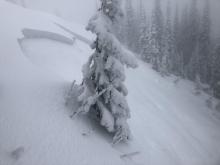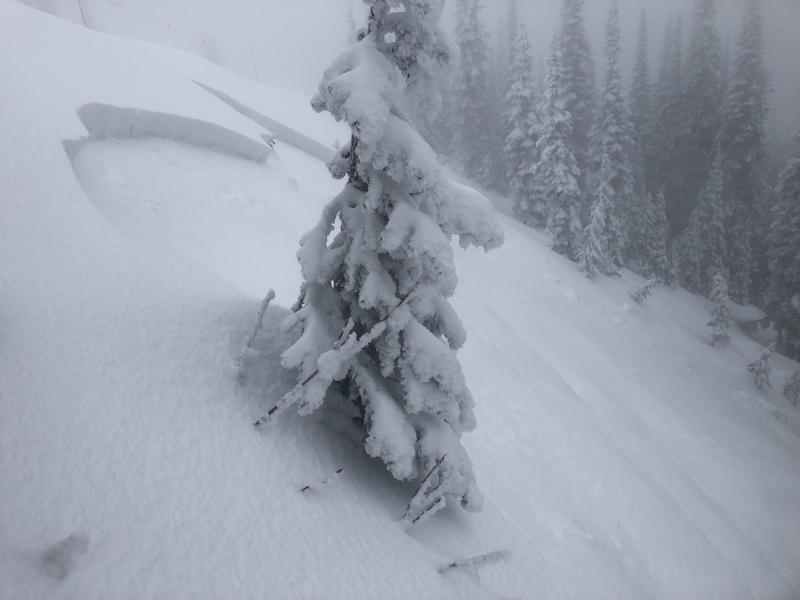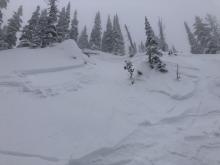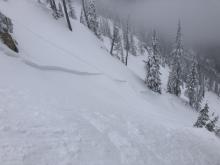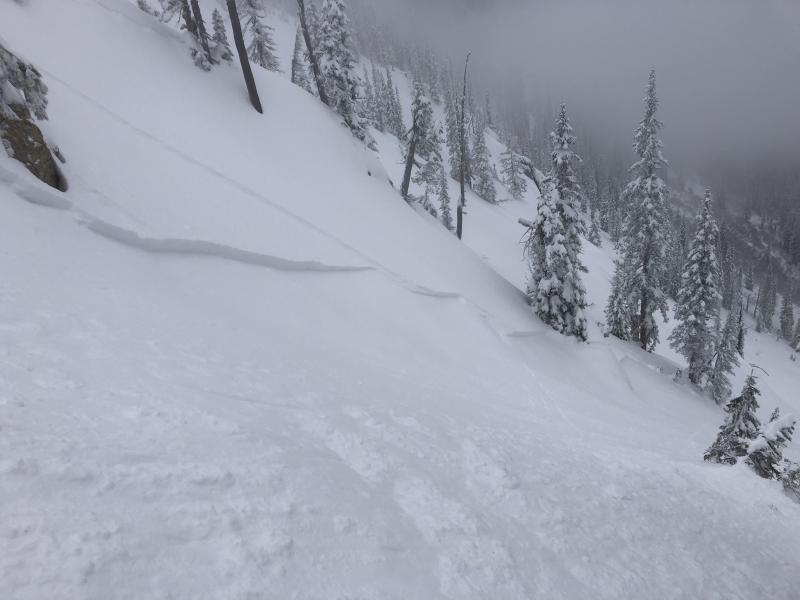| Tuesday | Tuesday Night | Wednesday | |
|---|---|---|---|
| Cloud Cover: | Mostly Cloudy | Mostly Cloudy | Mostly Cloudy |
| Temperatures: | 19 to 26 deg. F. | 10 to 15 deg. F. | 16 to 22 deg. F. |
| Wind Direction: | Southwest | Northwest | East |
| Wind Speed: | 13G28 | 12G25 | 9 |
| Snowfall: | 3" to 4" in. | 2" in. | 0" in. |
| Snow Line: | 1500' | 1000' | 0' |
Whitefish Range
Swan Range
Flathead Range and Glacier National Park
How to read the forecast
The risk of triggered avalanches increases as more than 6 inches of new snow accumulates on top of a layered snowpack. Be extra critical of alpine terrain where weak layers may be buried under denser and deeper slabs of new snow. That’s where the resulting avalanche could be larger and more dangerous. Shooting cracks and collapses are warning signs that new snow is unstable and unsafe. Carry rescue gear and keep your partner in sight.

No Rating
?
Above 6500 ft.
No Rating
?
5000-6500 ft.
No Rating
?
3500-5000 ft.
-
Type ?
-
Aspect/Elevation ?

-
Size ?HistoricVery LargeLargeSmall

Widespread snowfall will continue into Wednesday. Westerly winds accompanying the new snow will be strong enough to thicken new slabs. That means they can be more sensitive to triggering on exposed, leeward slopes. Things may be more dangerous in steep, alpine terrain where new slabs develop over a weak layer of facets. Cracking and collapsing new snow is a red flag telling you to ease back onto mellower slope angles. Poke around in the snow as you gain elevation. Be wary of steep terrain where dense snow sits atop soft, sugary grains. Hidden obstacles can increase the consequences of getting caught in an early season slide.
Rain and warm winds last week decimated the snow that covered the ground in October. So when new precipitation turned to snow again around November 6th, it was a do over in many areas. Observers on Mt. Brown last weekend found only new snow below 6,500 feet. Above that elevation, the underlying, old snow was wet and capped with a melt-freeze crust. Between 2 and 9 inches fell last weekend as arctic air moved southwest over the Divide. Temperatures remained cold, and I expect that weak near surface facets may have developed in alpine terrain.
Snowfall began again Monday and should continue into Wednesday. It will heavily favor the Swan Range with the Flathead coming in second place. Areas that see the most snow on Tuesday will also see the most ridgetop winds. Expect storm slabs to be thicker in leeward terrain. If they develop over a persistent weak layer the can break wider and in unexpected ways.
At lower elevations, stumps, logs, and rocks will become obstacles as they are covered by new snow. They may lurk in tracks and run-outs of avalanche paths, which will increase the consequences of getting caught.
After a break in the weather on Thursday, widespread snowfall will develop again going into the weekend. FAC staff will continue to monitor conditions and post updates as conditions warrant. We anticipate daily forecasts and full operations to begin in December. Your observations would be very helpful in the meantime. Stay in touch using our handy Snowpack Tracker.
We continue to get weather stations back up and running for the season. The Big Mountain station has not been recording accurate snow depths. Take it with a grain of salt.
Now is the time to tune up your avalanche knowledge. The 2020 Northern Rockies Snow and Avalanche Workshop will be held virtually from Nov. 12-14. Registration is open! Check out this winter’s avalanche safety course schedule and sign up for a class that fits your needs.
Precipitation that moved into the region late Monday will continue into Wednesday. Relatively dry high pressure will develop briefly on Thrusday, before the next cycle of of unsettled weather moves in by the weekend.
This forecast applies only to backcountry areas outside established ski area boundaries. The forecast describes general avalanche conditions and local variations always occur. This forecast expires at midnight on the posted day unless otherwise noted. The information in this forecast is provided by the USDA Forest Service who is solely responsible for its content.



